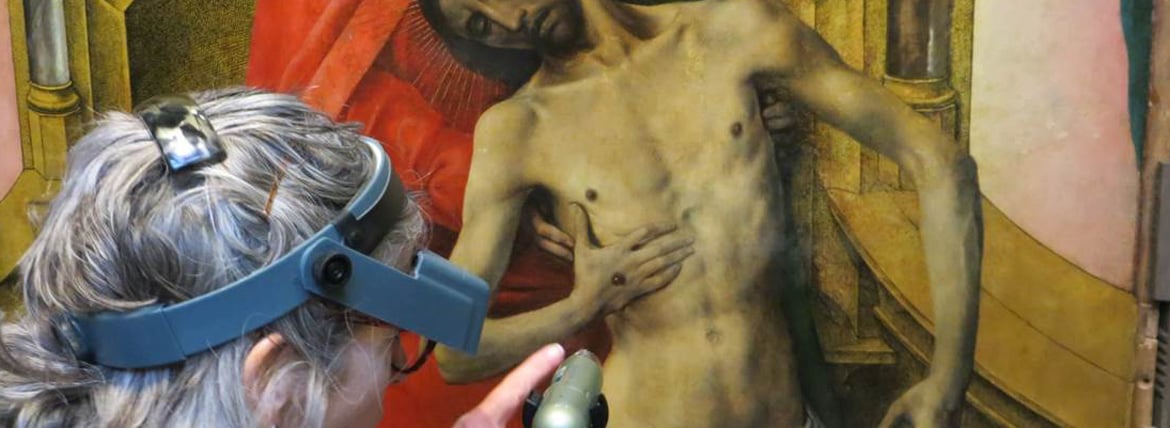
The Trinity Panels by Hugo van der Goes
Move to new location at Scottish National Gallery provides opportunity for study
The figure of the king
The painting of the king’s head is unlike the high quality of painting seen in the rest of the panels. His flesh has no luminosity and his proper right eye is drawn at the wrong angle. The crown sits awkwardly and is too large for his head. At a normal viewing distance his face looks like a flat brown mask when compared to the faces of the other figures.
On close examination the whole of his face appears to be overpainted and only a small section of his hair has anything approaching the fine brushwork of our artist.
In a raking light a raised lip of paint is visible around the shape of his head, where the thick green paint of Saint Andrew’s cloak was painted up to the drawn outline of the king’s head, as was customary with painting of this period.
In infra-red light, (shown above right), the dark paint of the king’s hair stands out against the green cloak but the contour is that of a face in three-quarter profile, with the tip of the nose and the shape of the chin quite clear. The top of his head (seen through the crown as a pale arc) seems to be a better fit with this larger profile.
Finally, to the right of his eye another eye, apparently more in profile, is just visible. There is little sign of any other under-drawing in the face but the overpaint could be obscuring it.
These pieces of evidence suggest the face was altered from an original larger profile to the present smaller and more three-quarter profile; we do not know when this happened or who did it.
At some point in the painting’s history, the king’s face was almost completely overpainted but not his crown or his robes. This may have been due to damage or, as has been suggested, because the portrait did not resemble the king well enough. It is unlikely that James III ever sat for Hugo van der Goes as there is no record of him having visited Belgium or of the artist having visited Scotland, and so it is to be assumed that the portrait was taken from a drawing made by a local artist and taken to Bruges, possibly by Edward Bonkil.







